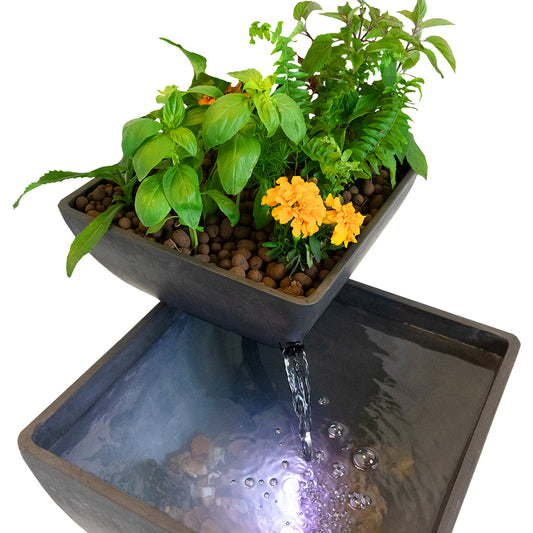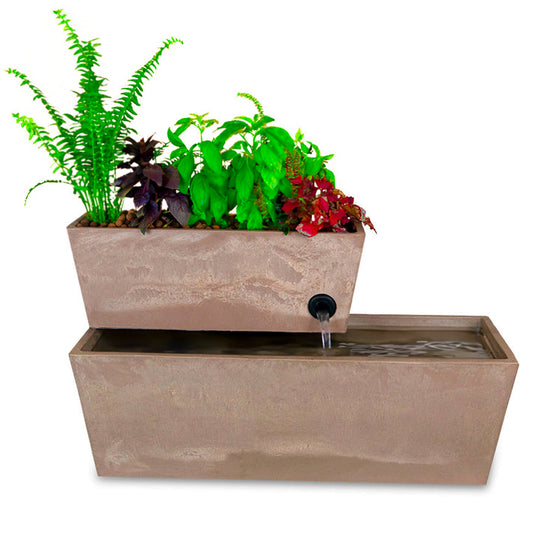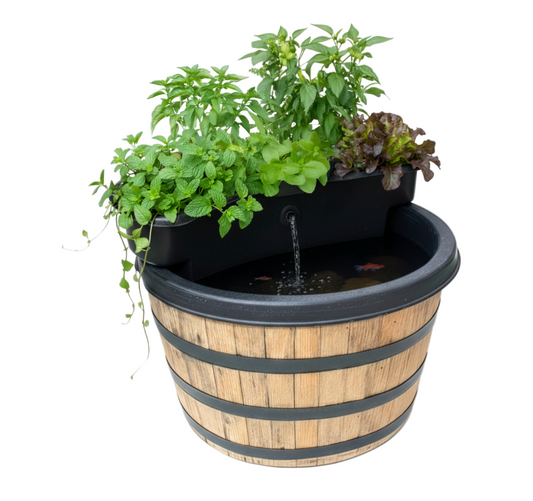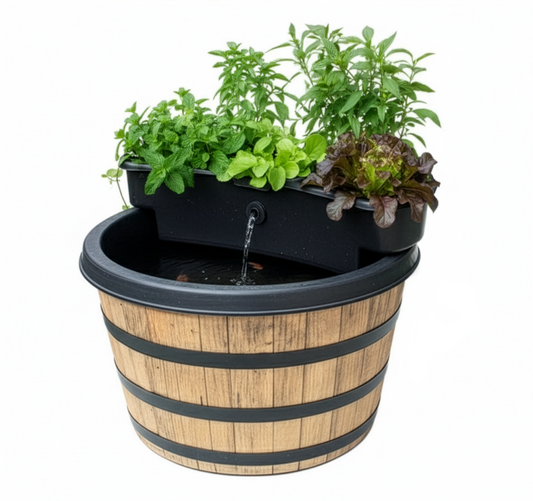Choosing the Right Plant Combos for Your Aquaponic Garden - Companion Planting

Plants are complicated. You wouldn’t think so, right? They don’t seem to do much. But the world they inhabit is surprisingly deep. They have moods and allegiances and grudges, and even secret alliances (check out the amazing world of mycorrhizal fungus!1). Well, okay - they don’t have all that the same way we do, but they do interact in more ways than you might think!
Sometimes plants just complement one another. Choosing crops to grow together for the synergistic benefits they provide is known as companion planting, and it’s a cornerstone of sustainable agriculture. Choosing the right companion plants can increase growth and pollination rates, reduce the need for active pest control, and if old farmers’ tales are to be believed, even improve the ripening and flavor of fruits. There is some experimental data showing that planting tomatoes and basil together has positive effects on the growth rate and health of both plants, but gardeners will also swear that their tomatoes develop larger and sweeter with appropriate companions.2
There’s also a dark side. Some plants just don’t get along. Most commonly, this is due to chemical changes one or both make to the local environment. Many plants continuously engage in a sort of chemical warfare to defend themselves and protect water and nutrients from encroaching neighbors, and certain chemical agents are particularly noxious to certain crops, a phenomenon called allelopathy. While the mechanism isn’t entirely clear, for example, it’s widely reported that onions & garlic interact negatively with beans & peas. Thankfully that’s only in the ground, not in a stockpot!)3
Companion planting can be a little mysterious, sometimes as much folklore as science if it’s a pairing that hasn’t been studied. (There are a wealth of resources out there for those looking for good crop pairings, including charts like this one from Urban Farmer.) Pest-repellent varieties like marigolds can be helpful alongside - or prior to - other plants which are particularly vulnerable.4 Not all the mechanisms are down to strange chemical effects, though! Sometimes it’s as simple as observing that two plants have growth habits that might work well together. Carrots are a common companion crop for bushy summer vegetables like beans, peppers, and tomatoes, since they do well in the same deep, well-drained soil. Growing lettuce with taller plants will keep the lettuce cooler and shadier, and the lettuce in turn can act like a layer of mulch, keeping the soil covered and moist.
So what about your aquaponic garden?
Information is sparse on whether there might be nutrient uptake or pest control benefits without soil to mediate them. Even without soil, it’s probably still worth staying away from known potential negative interactions. Given how tricky pest control can be in aquaponics, it’s certainly worth considering whether a single pest could wipe out your whole garden! Aphids in an aquaponic system can be a nightmare, but if you mix in some aphid-resistant herbs like chives or dill, they’ll have less plant matter to grow on and even if they get out of control, you won’t lose your whole crop!
Perhaps the most useful takeaway from companion planting for aquaponics is paying attention to growth habits. Which plants grow taller? Which ones spread out more? Will one be twice as tall as its neighbors before long, and if so, will those neighbors be okay if you move the light up away from them? In any aquaponic garden, planting is likely to be pretty dense, and chances are you’ll be providing some or all of the light for your plants artificially rather than relying on the sun. That means the more efficiently you use that space and light, the better your return on the resources you put into your system. Consider lower-growing, lower-light crops like lettuce grown around and alongside taller, more light-hungry varieties like peppers. Crops which all need strong light but grow at different speeds can result in awkward light arrangement and lost efficiency when they’re at different heights.
If you’re not sure where to start, we offer seeds for some easy, popular plants in our online store. And coming soon, check out our new AquaSprouts Companions Seed Kits. We’ve packaged up starter kits for your garden with combinations of seeds that we love! Get a savory herb mix, the makings for fresh salsa at home, an aphid-proof crop of aromatics, fresh greens for salads, or even a microgreens and catnip mix your fuzziest roommate will love. Each kit includes a curated seed mix, a package of our Aqua Grow Starter Plugs for keeping small seeds in place, and a quick reference card that gives you the basics on the plants you choose and tips on placement and timing. They make great gifts for aquaponic and hydroponic growers at any stage!
Happy planting, and remember: we all grow stronger together!
- https://www.motherearthnews.com/organic-gardening/gardening-techniques/mycorrhizal-fungi-zm0z14aszkin
- https://www.treehugger.com/lawn-garden/12-companion-plants-grow-alongside-your-tomatoes.html
- https://www.gardeningknowhow.com/edible/vegetables/vgen/incompatible-garden-plants.htm
- http://edis.ifas.ufl.edu/ng045










